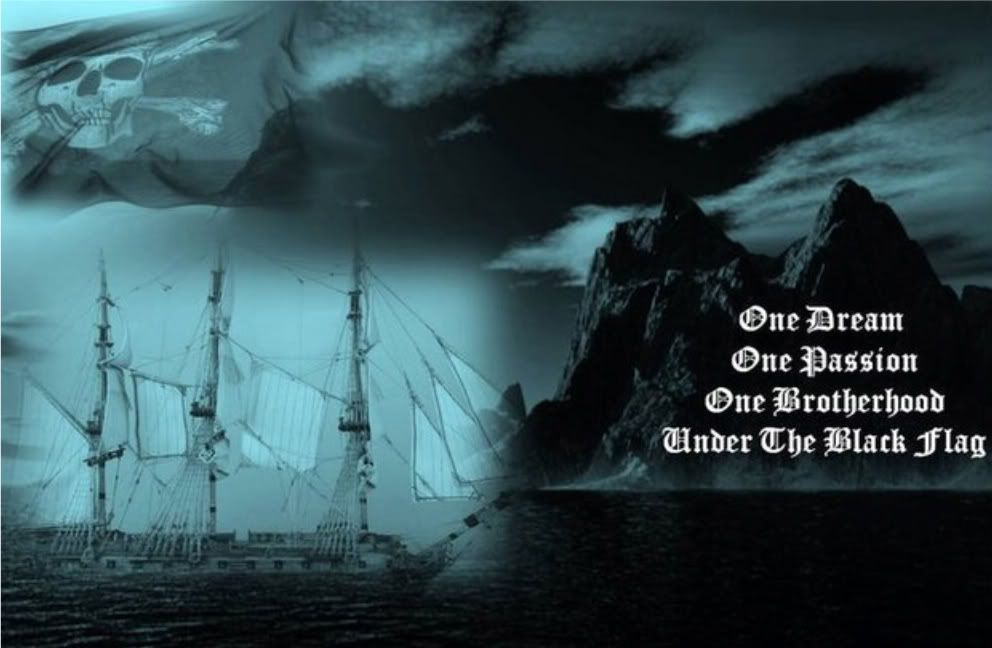Anne Dieu-Le-Veut
Anne Dieu-Le-Veut, Female, Pirate 1:30 μ.μ.
 AnneDieu-Le-Veut also called Marie-Anne or Marianne (born ca 1650)was a French Pirate,a so called Buccaneer,and together with Jaquotte Delahaye one of very few female ones.Her name means "Anne Gods-wants-it"; as it seemed that if she wantedsomething, it was as if God gave it to her.
AnneDieu-Le-Veut also called Marie-Anne or Marianne (born ca 1650)was a French Pirate,a so called Buccaneer,and together with Jaquotte Delahaye one of very few female ones.Her name means "Anne Gods-wants-it"; as it seemed that if she wantedsomething, it was as if God gave it to her.Shewas originally one of the women called "Filles de Roi" ("King's Daughters")sentby the French government to Tortugain Haitito become wives to the local male colonists, as was a French policy in manyother French colonies, such as Louisiana and Quebec, and she is believed tohave been a criminal deported from France in this manner, as were many of thosewomen. Her deportation to Tortuga was said to have taken place during thereign of governor Betrand d'Ogeronde la Bouere, which means it must have been in 1665-1668 or1669-1675. In Tortuga she was married to thebuccaneer Pierre Length.
In1683, Anne's husband was killed in a bar fight by the famous buccaneer Laurens de Graff.She challenged Laurens to a duel to avenge her husbands death (other sourcesclaims she heard him insult her), and while Laurens drew his sword, Anne drewher gun. Laurens then succumbed saying he would not fight a woman; he thenproposed to her on the spot in admiration of her courage, and she accepted. Inreality, the two were actually not married, as Laurens already had a wife hehad abandoned many years ago, but they were from this point seen as man andwife. Others claim this event happened in 1693.
Anneis called a pirate because she accompanied Laurens on his ship and fought onhis side during acts of piracy, sharing his work and the command on his ship inthe same fashion as Anne Bonny did with Calico Jack.Unlike Anne Bonny, she did not disguise her sex, and her acts therefore arousedmuch attention and fascination. She was talked about as brave, stern andruthless, and it was in these years that her name "Anne God-Wants"became known. Usually, it was considered bad luck to have a woman onboard aship, but Anne was instead regarded as the bringer of good luck.
In1693, her husband raided Jamaica, and was as a thanks rewarded with the noble title ofChevalier, the position of Major Lieutenant and the commission of Ile-a-Vache,but the year after, the English took their revenge on Tortuga, and Anne and hertwo daughters were taken prisoner by the English and kept as hostages for threeyears. She was said to have been treated with great respect. In 1698 they werereunited with Laurens.
Afterthis, their fates become blurred; some say they became colonists in Mississippi,Alabamaor Louisiana
Themost famous story of Anne is as follows: as Anne and Laurens attacked a Spanishship, a cannon ball took the life of Laurens, and Anne took his place ascommander of his ship, as she had done before, hurled their crew of pirates onwith fury in the fight against the Spaniards. However, the pirates wereoutnumbered, and they were all captured and taken first to Vera Cruzin Mexico,and then to Cartagena in Colombia,both of which were cities earlier sacked by Laurens, to be judged. Anne's famewas so great that when the French Marine Secretary of Pontchartrain heard ofthis, he wrote to Louis XIV of France Spain
Thisstory is not confirmed, but it could be at least partially true; if Laurens andAnne settled in Mississippi, it would not have prevented them from continuingtheir career of piracy, on the contrary, it would make it easier - as Tortugawas closed as a base for the buccaneers in 1697, Mississippi would have been amuch better headquarters, and privateering against Spain would have been verypossible during the Spanish war of Succession in 1700-1714. The fact that Annewas rescued by the intervention of an official from Pontchartrain in Louisiana Mississippi France
Ifthis truly happened when Laurens died, which is the part of the story that ismost unlikely to be true, it could have happened in 1704, which is thetraditional guess on Laurens death-year.
Anne’sdaughter (she was said to have had two, born in the early 1690s) was said tohave lived in Haiti












